
MEMBERSHIP GROWTH
EHA


Membership Growth
Fostering Collaboration and Excellence in Hematology

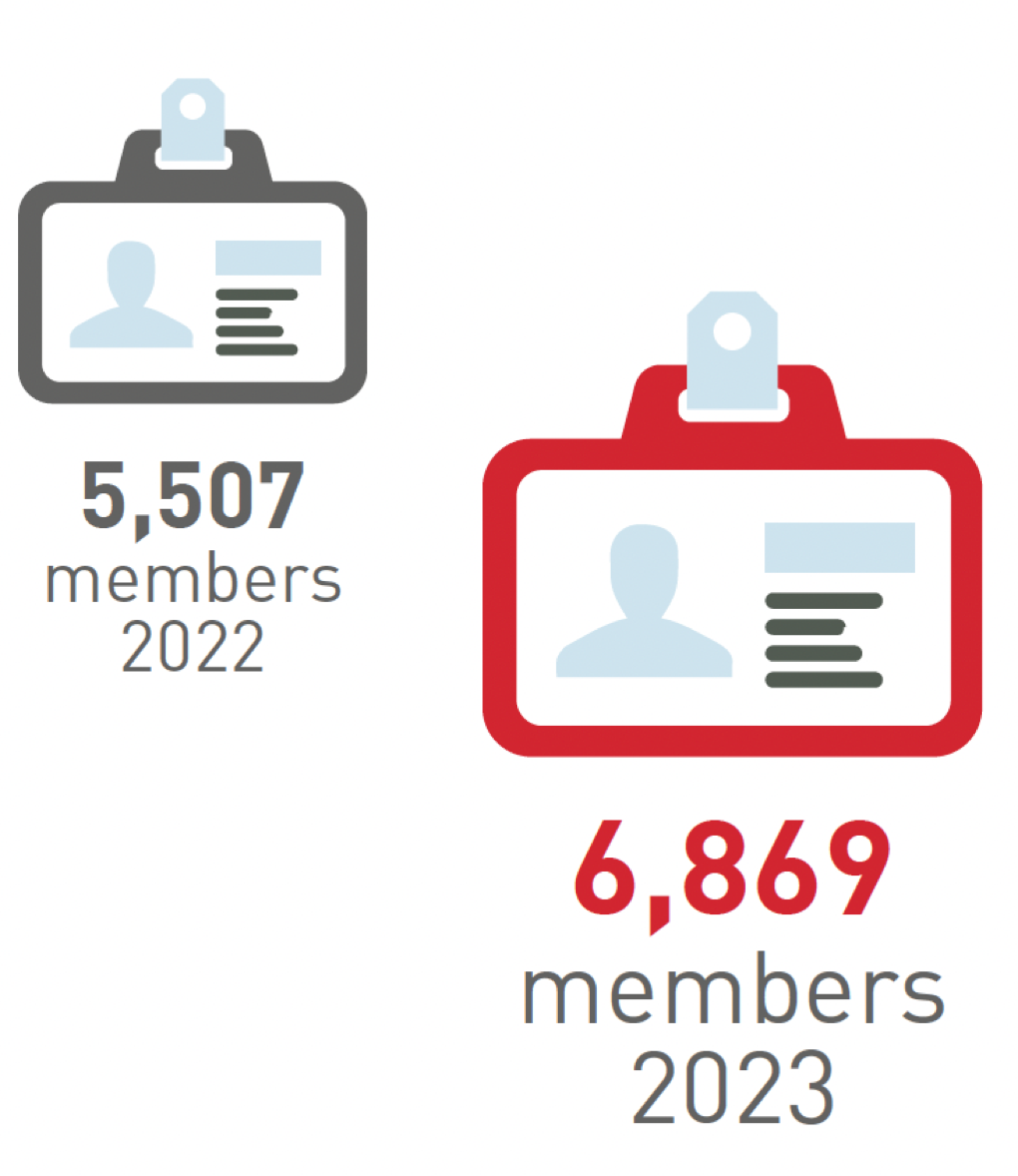
In 2023, EHA experienced a surge in membership, with numbers soaring from 5,507 in 2022 to an impressive 6,869 active members in 2023. This is a year-on-year increase of 25%. Many factors contributed to this growth, including new membership registrations linked to Congress, designing activities tailored to member needs, and strengthening our networking opportunities.
Joint Membership makes up to 13% of the total member types, Junior and full making up 41% each, Emeritus Membership remains at (5%) and Health Care Affiliated Professional Membership accounts for 1% of the total membership.
In April and May of 2023, we witnessed exceptional growth with 1,174 and 1,741 new memberships respectively. This marked a significant milestone as it was the first time in the past five years that we surpassed the 1,000 membership mark in a single month. Prior to this, the only other month to achieve such a feat was February 2019, with 1,166 members.
Alongside the growth in participation, the retention rates also witnessed a healthy growth. In 2022, the retention rate stood at 61%, indicating a strong ability to maintain member engagement and with increased participation in 2023, the retention rate jumped to 67%.
1. Statistics
Summary of EHA's membership growth and retention rates, and a demographic breakdown of members.
Who are our members?
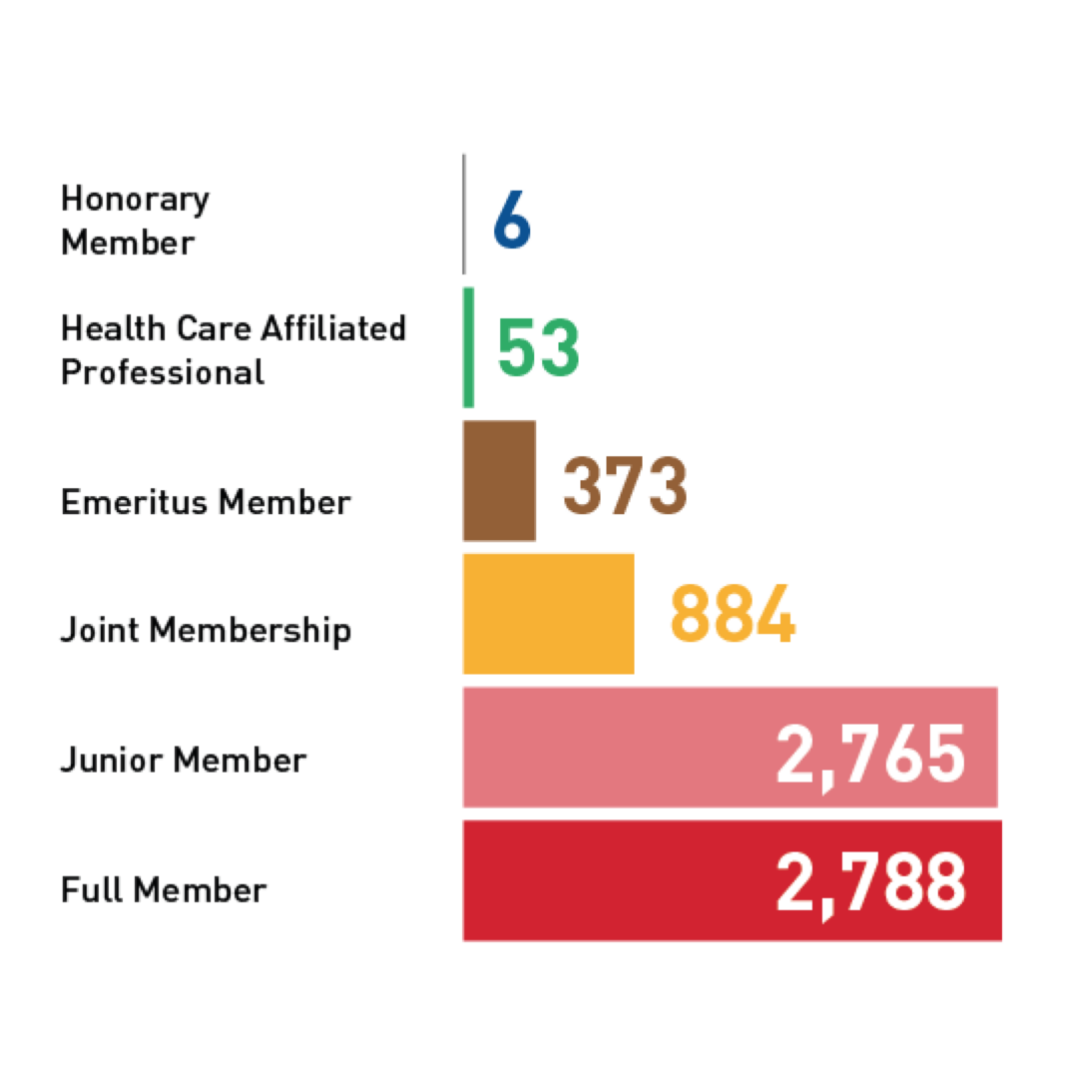
Top 10 countries
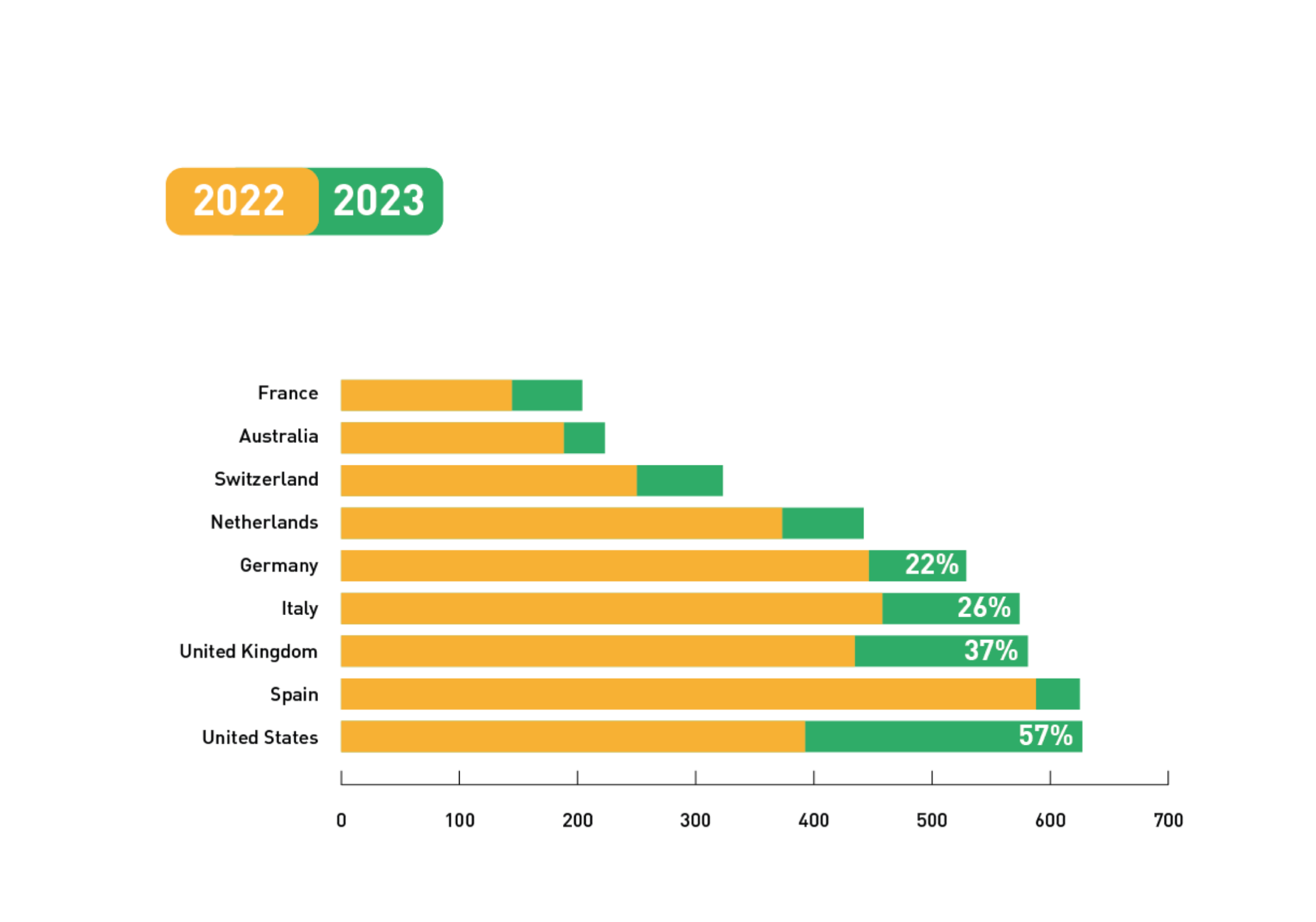
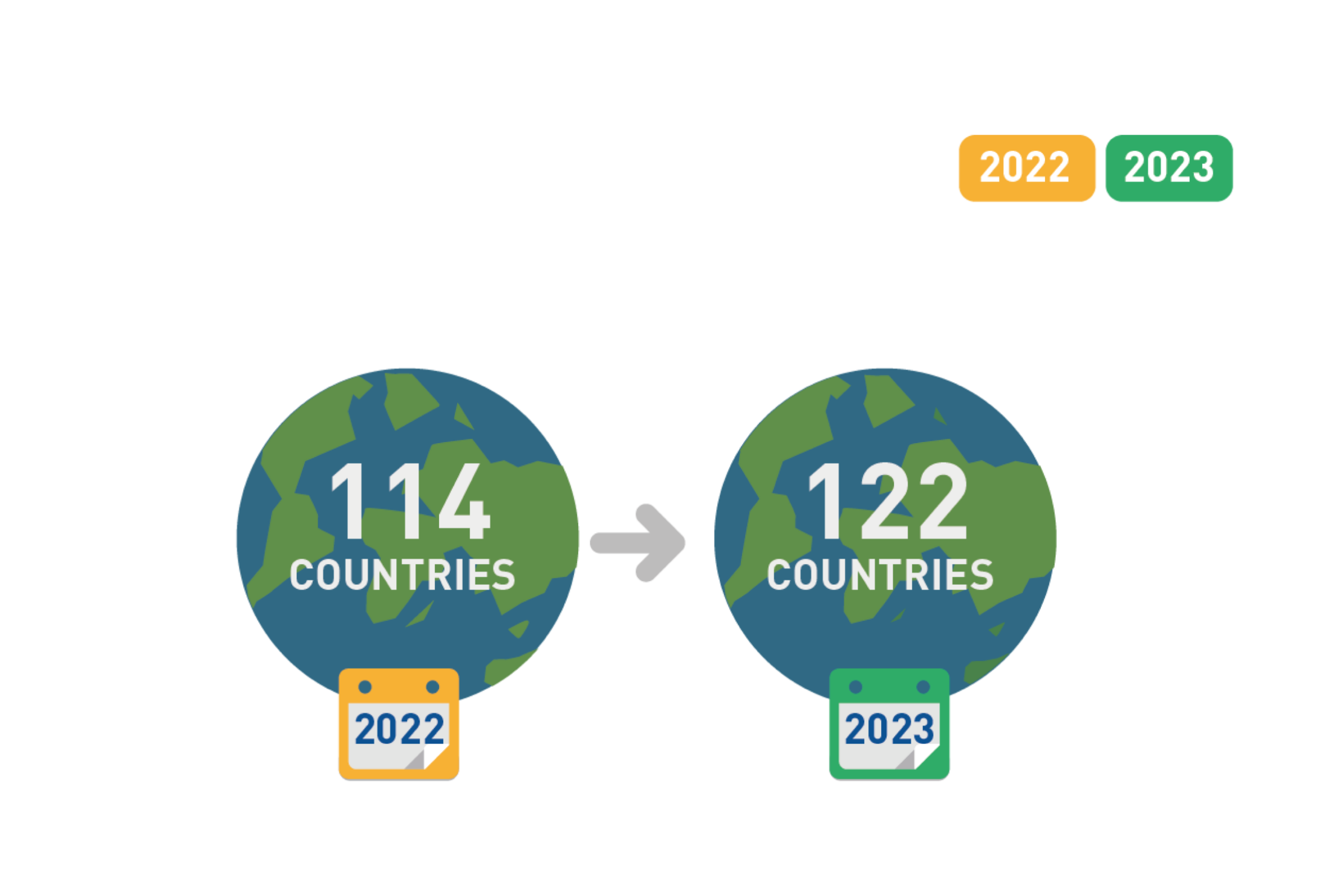
All member countries
Male /
Female
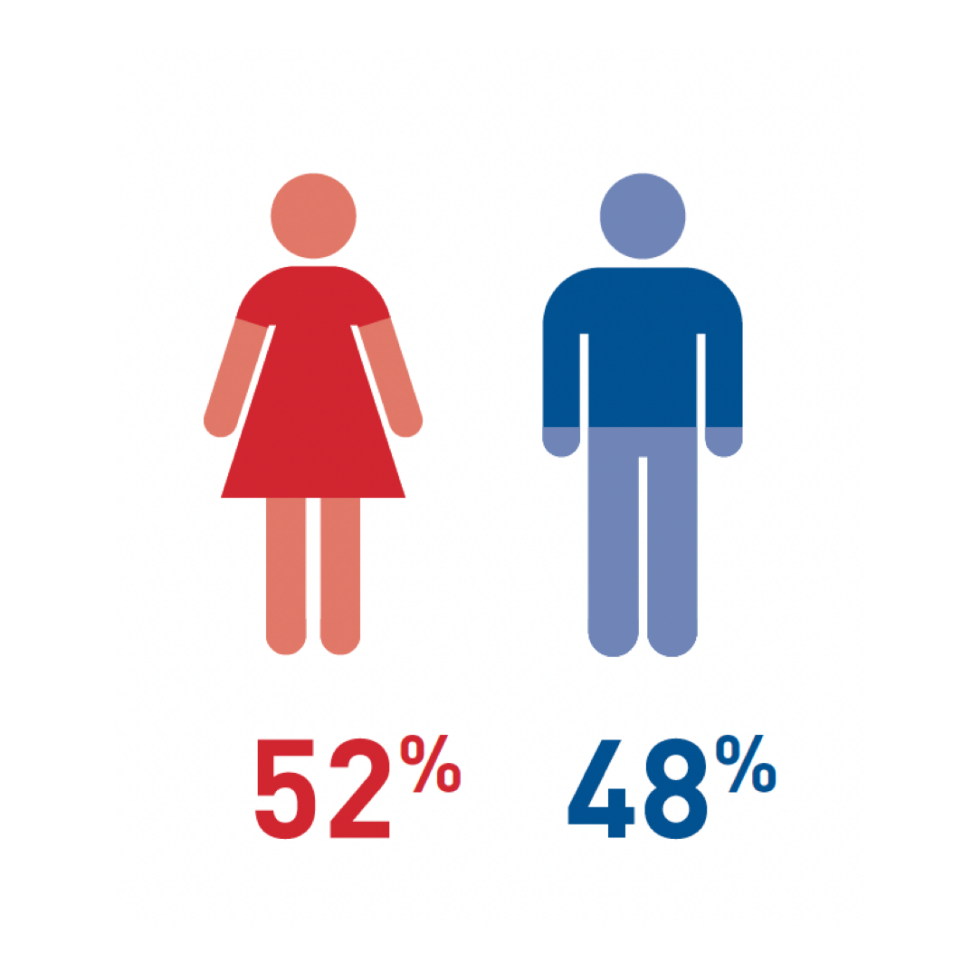
Age breakdown 2022 / 2023
The highest number of active EHA members are under 45 indicating a higher interest in this age group. The age table shows us that the active age group are junior members from 26 to 36 years old. Following that, full memberships are also popular among the 37-64 age group, making it almost 55% from all other age groups. On the other hand, Emeritus members aged 65 years and older are less involved at only 6% of total membership.
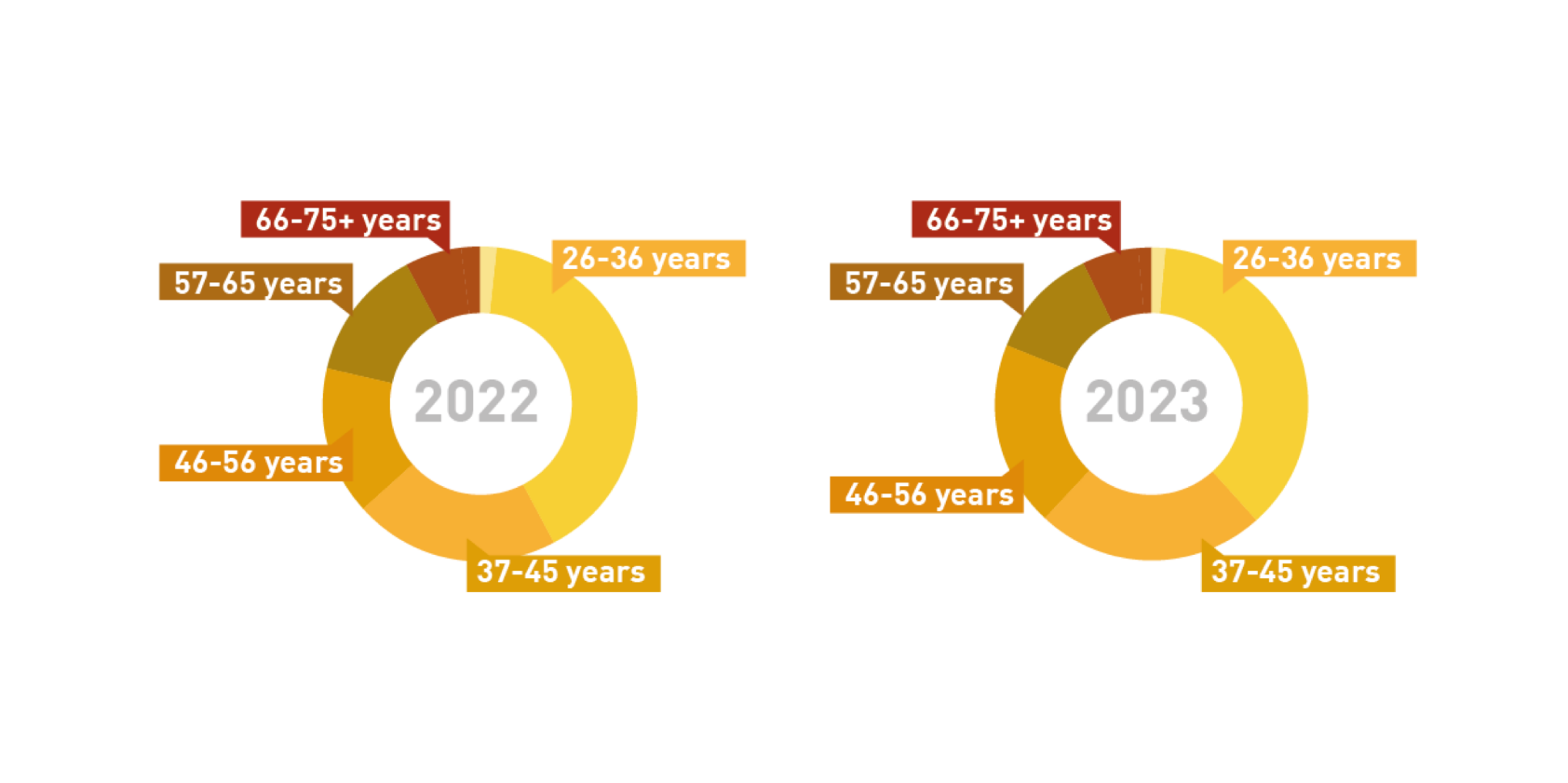
2. Joint Memberships
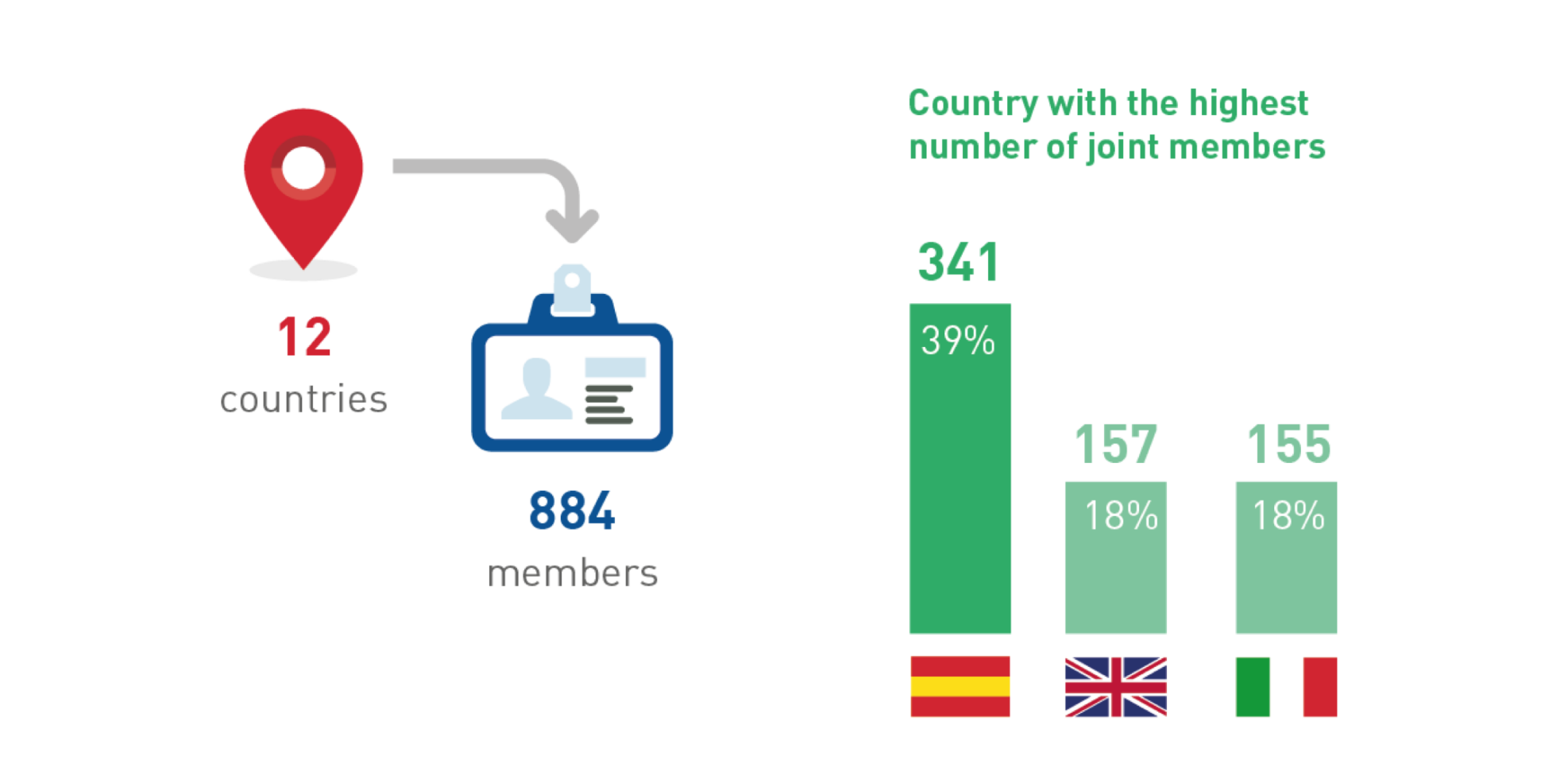
In 2023, the total number of Joint Memberships grew to 12 countries and a total of 884 members, which indicates a growth of about 29%. We established new Joint Membership agreements with Armenia, Bulgaria, Albania, Romania, Turkey, and Hungary.
The country with the highest number of joint members is Spain with 341 members (39% of total joint members), followed by the UK with 157 (18%) and Italy with 155 (18%). It is worth mentioning that Joint Membership in general is experiencing an upward trend due to the value of these collaborative agreements.
3. What members found important in 2023
The member and stakeholder survey in 2023 clearly indicated what aspects of their membership members found important.
83% of members stated that EHA delivers on the top priority of providing high-quality independent medical education to support hematologists very well. This was evident in high EHA Campus subscription rates and record attendance at Congress.
7,108 visits were recorded on the EHA Campus, a yearly increase of 35%, indicating a strong interest to use the 23 new comprehensive courses. The visits included 4,384 junior members, and 1,827 full members with more than 75% of the Campus users rating the programme as excellent or good. This is testament to EHA Campus providing a diverse learning environment that supports individuals at various stages of their medical careers.
Among other educational initiatives, 529 members participated in exams linked to the EHA Progress Test, an increase of 22%.
91% of our members were very satisfied with the delivery of EHA Annual Congress. 13,619 people from 116 countries attended Congress, with over 3,000 member visits recorded in the membership lounge that was introduced for the first time in Frankfurt.
77% agreed that EHA delivers well on ‘Enhancing quality of patient care through thought-leadership and clinical practice guidance’, 59% believe that we ‘Foster a collaborative network between members and those in the hematology sector’ and 58% agree that we deliver well on ‘Supporting research, funding and improved policies’.
4. Relationships
Patient Advocacy Committee
In 2023, the Patient Advocacy Committee (PAC) continued with the mission to increase patient voices and visibility within EHA and the wider hematology community.
In line with the mission, patient advocacy representation was increased in key committees, working groups, and other decision-making bodies. This ensures that we use the involvement of patient advocates to improve the overall outcomes for the patient. In 2023, the PAC representatives were included in the Scientific Programme Committee (SPC), which is responsible for the overall programme of the EHA Congress meetings, as well as in Specialized Working Groups (SWGs). In addition to this, EHA organised complementary registrations for the webinars that engaged over 100 participants.
In 2023, the committee also added another patient organization, the European Sickle Cell Federation. A new co-chair will be installed as of January 2024.
EHA’s commitment to Diversity, Equity, and Inclusion (DEI)
In 2023, EHA's DEI Taskforce was responsible for leading several initiatives focusing on improving inclusion across the hematology community. These included a comprehensive approach to address issues of underrepresented countries within EHA and focused on bringing together diverse opinions, thoughts, and perspectives that are crucial to fostering innovation in hematology. These included revisions to incorporate DEI principles in key documents, training members, and data collection.
In 2023, the Specialized Working Groups (SWGs) achieved several milestones. The SWGs play a crucial role in fostering scientific networks under the European Hematology Association (EHA) umbrella by identifying innovative areas for research, producing guidelines to unify treatment and diagnostic options, and developing education for hematologists. EHA support stimulates engagement, benefits network collaboration, and increases representation from diverse backgrounds.
One of the key milestones for 2023 was the development of a comprehensive SWG framework to streamline engagement at the first gathering of SWG Chairs/Vice-Chairs and Committee members after COVID-19. Two SWG Scientific meetings were held in Budapest, Hungary, focusing on novel research, diagnostic, and treatment developments in hematology (Red Cell and Iron Metabolism Defects and Commonalities and Differences of Myeloid Neoplasms). More than 268 participants attended these meetings, and more than 60 abstracts were submitted. The EHA Lymphoma Group organized a disease-oriented clinical research training called “La Cantera” to train early career clinicians. The EHA Congress 2023 in Frankfurt, Germany, featured 24 SWG sessions, attracting 9,305 participants, a 9% increase from 2022.
Three SWG-initiated grants were awarded to support research ideas within SWGs, including projects on CAR NK-cells, European registry on inherited platelet disorders, and long-lasting, late-onset, and chronic idiopathic neutropenia. By September 2023, there were more than 462 SWG members.
Specialized Working Groups
European Board for Accreditation in Hematology
The European Board for Accreditation in Hematology (EBAH) serves as a benchmark accreditation body in Europe, ensuring impartial and transparent continuation of medical education in hematology. Supported by the European Hematology Association (EHA), EBAH continually evolves, aligning its mission and vision with EHA priorities to advance hematology further. In 2023, EBAH saw a 12% increase in accredited educational activities, totalling 75 for the year. This growth reflects the rising recognition of EBAH’s quality standards in hematology. Additionally, there was an 8% rise in EBAH accounts, with numbers jumping from 1,940 to 19,400, indicating heightened interest and engagement in EBAH-accredited events.
Seven providers, including UPTODATE (US) and the European School of Haematology (ESH), signed contracts to maintain the high quality of these events. The EHA Executive Office also introduced the EBAH Handbook, a detailed guide for the accreditation process, underscoring the importance of thorough preparation for EBAH’s rigorous assessment.

BACK UP

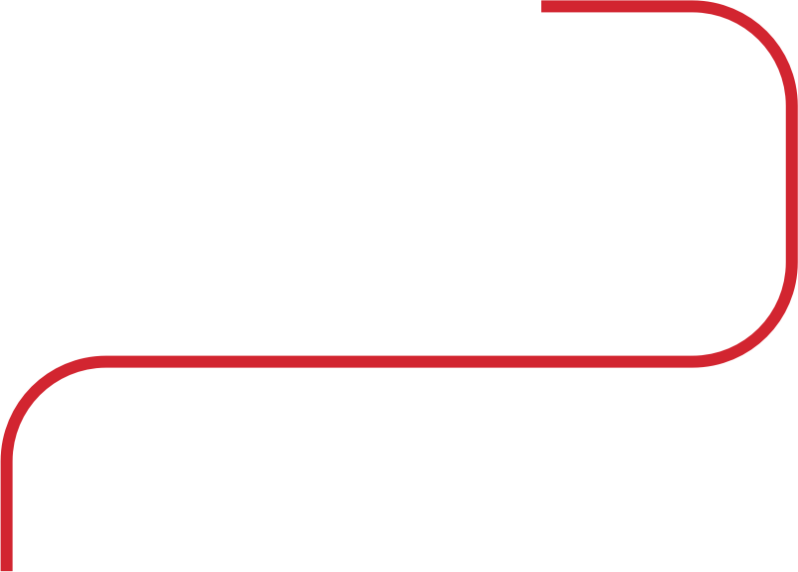


MEMBERSHIP GROWTH
EHA


scroll
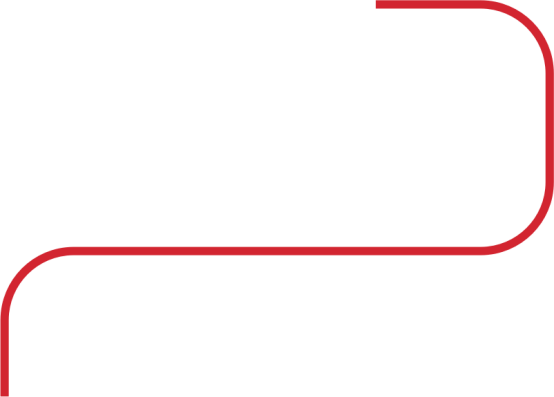

BACK UP
European Board for Accreditation in Hematology
The European Board for Accreditation in Hematology (EBAH) serves as a benchmark accreditation body in Europe, ensuring impartial and transparent continuation of medical education in hematology. Supported by the European Hematology Association (EHA), EBAH continually evolves, aligning its mission and vision with EHA priorities to advance hematology further. In 2023, EBAH saw a 12% increase in accredited educational activities, totalling 75 for the year. This growth reflects the rising recognition of EBAH’s quality standards in hematology. Additionally, there was an 8% rise in EBAH accounts, with numbers jumping from 1,940 to 19,400, indicating heightened interest and engagement in EBAH-accredited events.
Seven providers, including UPTODATE (US) and the European School of Haematology (ESH), signed contracts to maintain the high quality of these events. The EHA Executive Office also introduced the EBAH Handbook, a detailed guide for the accreditation process, underscoring the importance of thorough preparation for EBAH’s rigorous assessment.
In 2023, the Specialized Working Groups (SWGs) achieved several milestones. The SWGs play a crucial role in fostering scientific networks under the European Hematology Association (EHA) umbrella by identifying innovative areas for research, producing guidelines to unify treatment and diagnostic options, and developing education for hematologists. EHA support stimulates engagement, benefits network collaboration, and increases representation from diverse backgrounds.
One of the key milestones for 2023 was the development of a comprehensive SWG framework to streamline engagement at the first gathering of SWG Chairs/Vice-Chairs and Committee members after COVID-19. Two SWG Scientific meetings were held in Budapest, Hungary, focusing on novel research, diagnostic, and treatment developments in hematology (Red Cell and Iron Metabolism Defects and Commonalities and Differences of Myeloid Neoplasms). More than 268 participants attended these meetings, and more than 60 abstracts were submitted. The EHA Lymphoma Group organized a disease-oriented clinical research training called “La Cantera” to train early career clinicians. The EHA Congress 2023 in Frankfurt, Germany, featured 24 SWG sessions, attracting 9,305 participants, a 9% increase from 2022.
Three SWG-initiated grants were awarded to support research ideas within SWGs, including projects on CAR NK-cells, European registry on inherited platelet disorders, and long-lasting, late-onset, and chronic idiopathic neutropenia. By September 2023, there were more than 462 SWG members.
Specialized Working Groups
EHA’s commitment to Diversity, Equity, and Inclusion (DEI)
In 2023, EHA's DEI Taskforce was responsible for leading several initiatives focusing on improving inclusion across the hematology community. These included a comprehensive approach to address issues of underrepresented countries within EHA and focused on bringing together diverse opinions, thoughts, and perspectives that are crucial to fostering innovation in hematology. These included revisions to incorporate DEI principles in key documents, training members, and data collection.
Patient Advocacy Committee
In 2023, the Patient Advocacy Committee (PAC) continued with the mission to increase patient voices and visibility within EHA and the wider hematology community.
In line with the mission, patient advocacy representation was increased in key committees, working groups, and other decision-making bodies. This ensures that we use the involvement of patient advocates to improve the overall outcomes for the patient. In 2023, the PAC representatives were included in the Scientific Programme Committee (SPC), which is responsible for the overall programme of the EHA Congress meetings, as well as in Specialized Working Groups (SWGs). In addition to this, EHA organised complementary registrations for the webinars that engaged over 100 participants.
In 2023, the committee also added another patient organization, the European Sickle Cell Federation. A new co-chair will be installed as of January 2024.
4. Relationships
The member and stakeholder survey in 2023 clearly indicated what aspects of their membership members found important.
83% of members stated that EHA delivers on the top priority of providing high-quality independent medical education to support hematologists very well. This was evident in high EHA Campus subscription rates and record attendance at Congress.
7,108 visits were recorded on the EHA Campus, a yearly increase of 35%, indicating a strong interest to use the 23 new comprehensive courses. The visits included 4,384 junior members, and 1,827 full members with more than 75% of the Campus users rating the programme as excellent or good. This is testament to EHA Campus providing a diverse learning environment that supports individuals at various stages of their medical careers.
Among other educational initiatives, 529 members participated in exams linked to the EHA Progress Test, an increase of 22%.
91% of our members were very satisfied with the delivery of EHA Annual Congress. 13,619 people from 116 countries attended Congress, with over 3,000 member visits recorded in the membership lounge that was introduced for the first time in Frankfurt.
77% agreed that EHA delivers well on ‘Enhancing quality of patient care through thought-leadership and clinical practice guidance’, 59% believe that we ‘Foster a collaborative network between members and those in the hematology sector’ and 58% agree that we deliver well on ‘Supporting research, funding and improved policies’.
3. What members found important in 2023
scroll
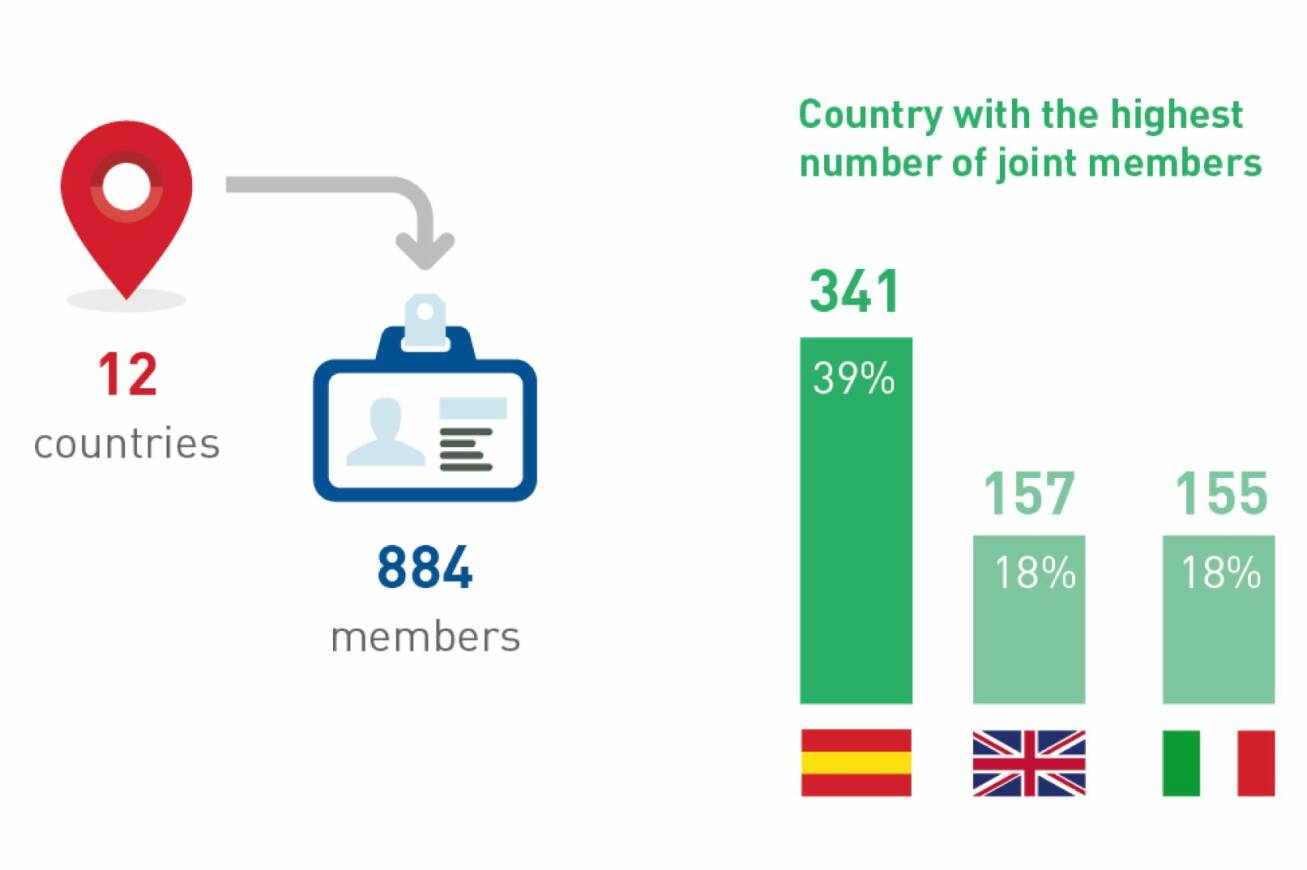
In 2023, the total number of Joint Memberships grew to 12 countries and a total of 884 members, which indicates a growth of about 29%. We established new Joint Membership agreements with Armenia, Bulgaria, Albania, Romania, Turkey, and Hungary.
The country with the highest number of joint members is Spain with 341 members (39% of total joint members), followed by the UK with 157 (18%) and Italy with 155 (18%). It is worth mentioning that Joint Membership in general is experiencing an upward trend due to the value of these collaborative agreements.
2. Joint Memberships
The highest number of active EHA members are under 45 indicating a higher interest in this age group. The age table shows us that the active age group are junior members from 26 to 36 years old. Following that, full memberships are also popular among the 37-64 age group, making it almost 55% from all other age groups. On the other hand, Emeritus members aged 65 years and older are less involved at only 6% of total membership.
Age breakdown 2022 / 2023

Male /
Female
In 2022, the highest number of members were from Spain, Italy, Germany and UK.
All member countries
Top 10 countries
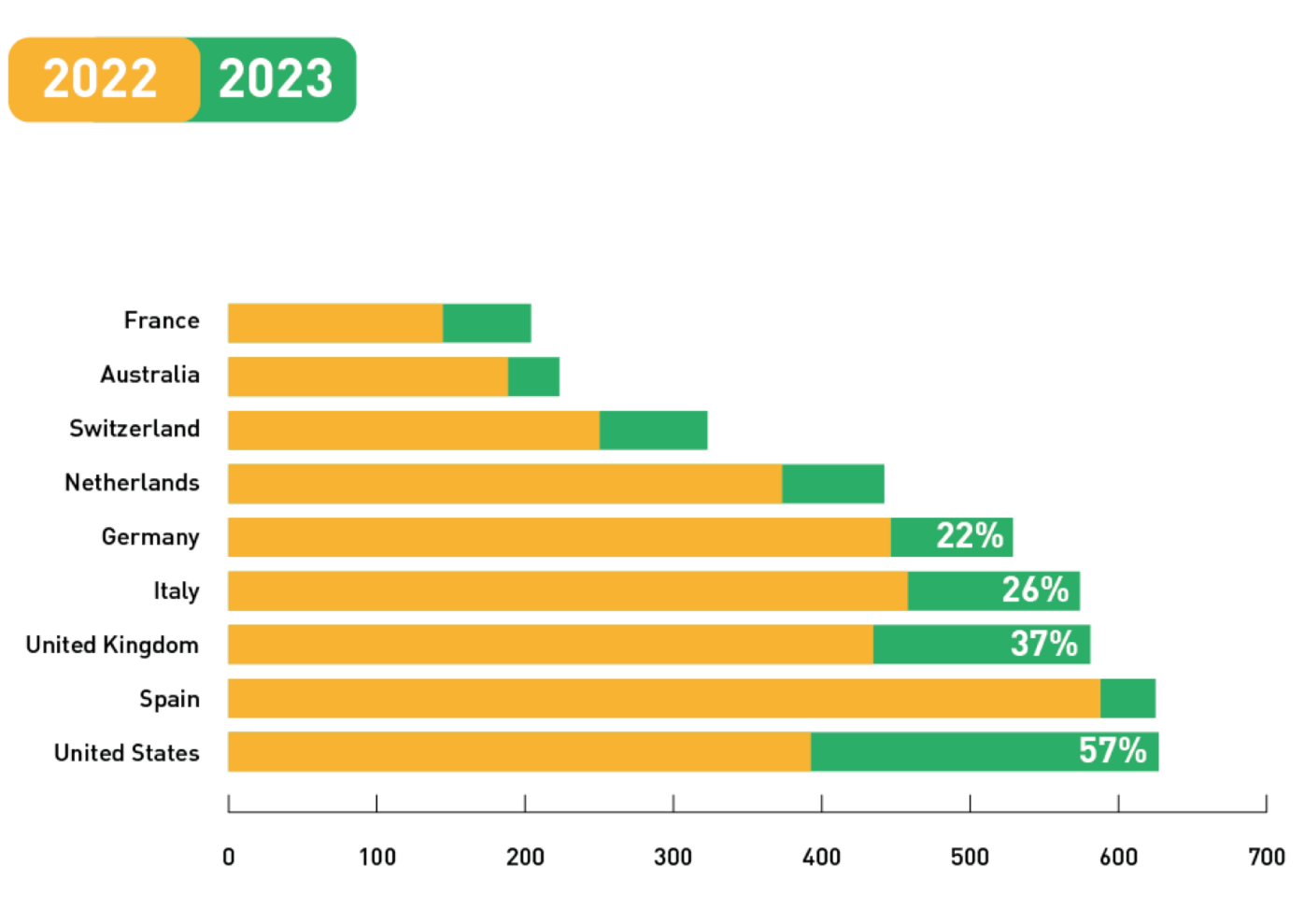
Who are our members?
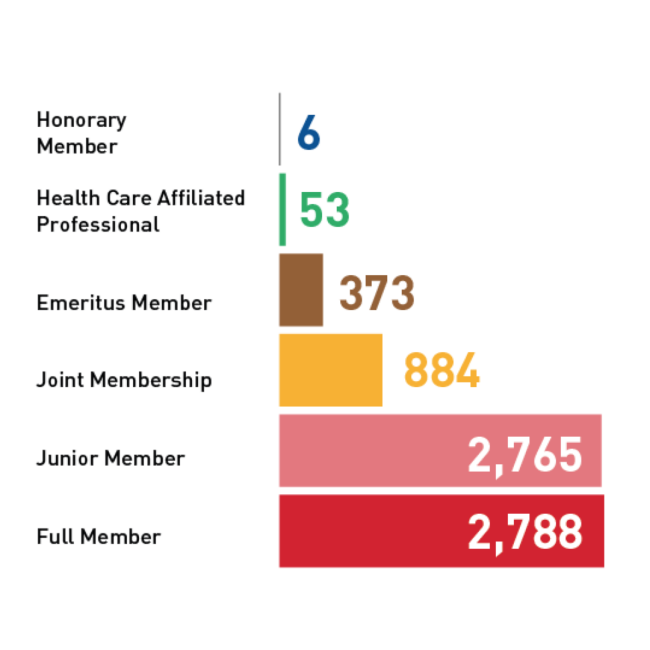
Summary of EHA's membership growth and retention rates, and a demographic breakdown of members.
1. Statistics

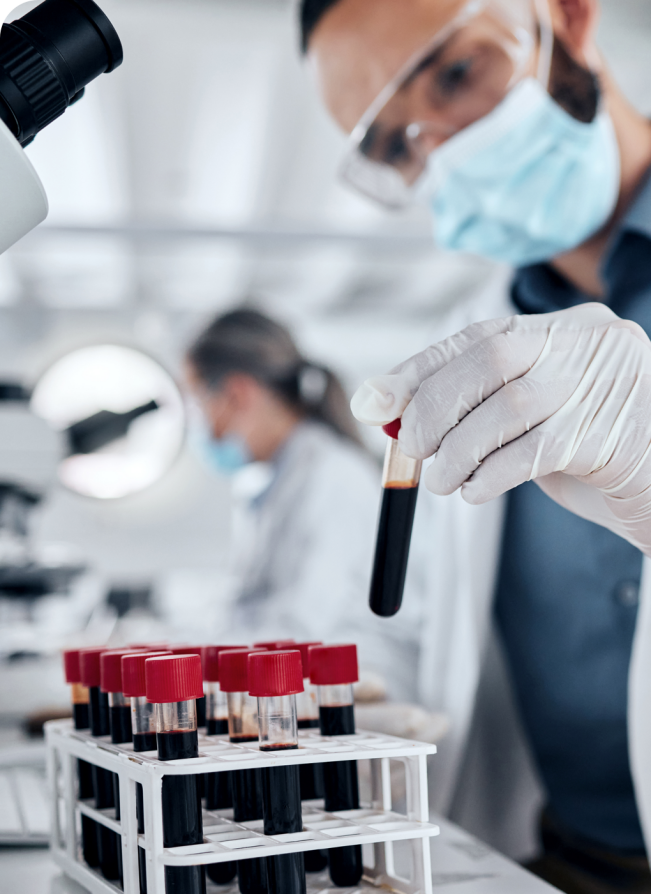
In 2023, EHA experienced a surge in membership, with numbers soaring from 5,507 in 2022 to an impressive 6,869 active members in 2023. This is a year-on-year increase of 25%. Many factors contributed to this growth, including new membership registrations linked to Congress, designing activities tailored to member needs, and strengthening our networking opportunities.
Joint Membership makes up to 13% of the total member types, Junior and full making up 41% each, Emeritus Membership remains at (5%) and Health Care Affiliated Professional Membership accounts for 1% of the total membership.
In April and May of 2023, we witnessed exceptional growth with 1,174 and 1,741 new memberships respectively. This marked a significant milestone as it was the first time in the past five years that we surpassed the 1,000 membership mark in a single month. Prior to this, the only other month to achieve such a feat was February 2019, with 1,166 members.
Alongside the growth in participation, the retention rates also witnessed a healthy growth. In 2022, the retention rate stood at 61%, indicating a strong ability to maintain member engagement and with increased participation in 2023, the retention rate jumped to 67%.

Membership Growth
Fostering Collaboration and Excellence in Hematology


scroll
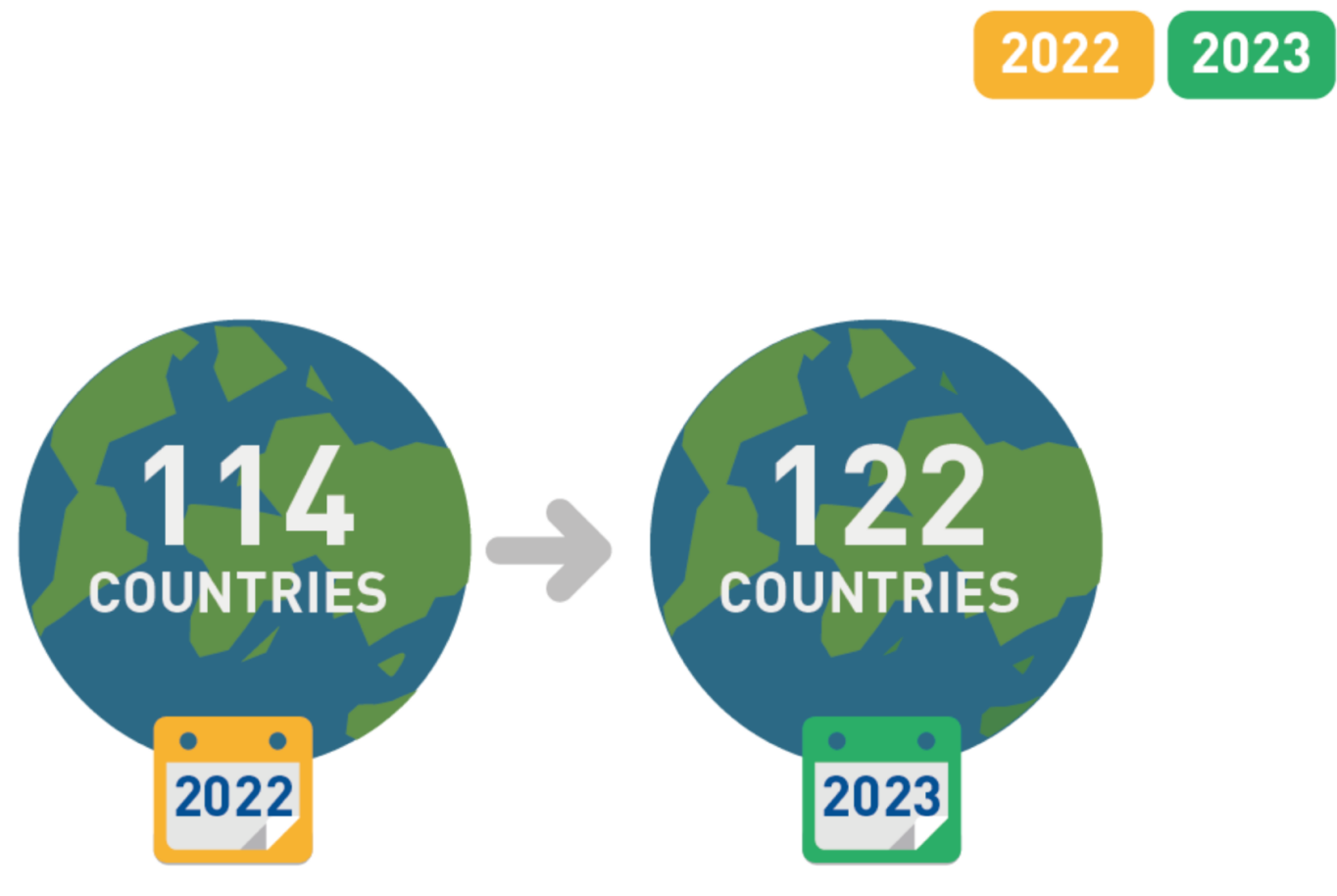
scroll
